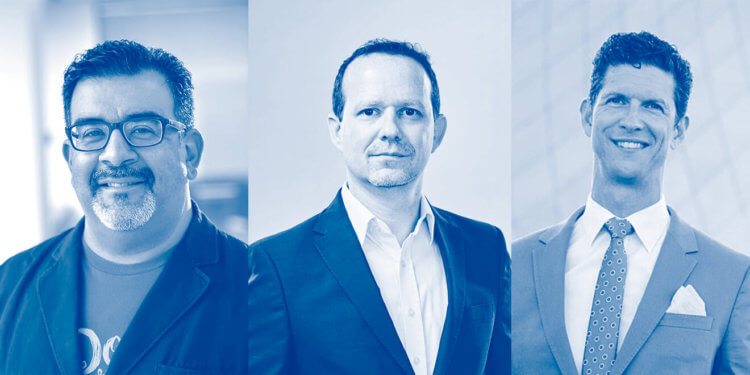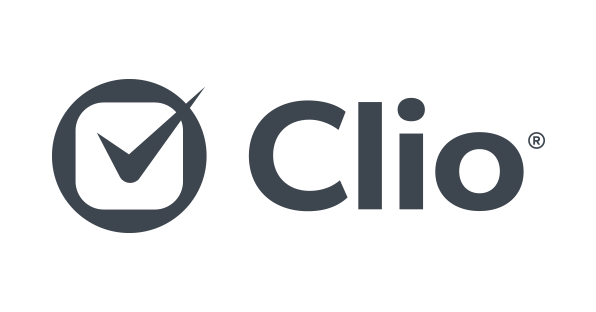

About the episode:
When most people think of robots, they envision large metal contraptions that move about awkwardly. In recent years, the idea of robots has broadened to encompass all sorts of automated technological systems, such as virtual assistants like Amazon’s Alexa.
In this episode, we’ll explore legal robots. We’ll focus primarily on arguably the most common kind of legal robot—automated chatbots—which deserve special attention because, despite being relatively un-utilized by the majority of the legal community, they have the potential to drastically change the future of the industry.
Three legal technology experts will discuss what chatbots are, why they’re valuable to modern lawyers and legal clients, and how they can be designed to automate a wide variety of legal services. They’ll also take us through some of the limitations of chatbots, and some of the ethical concerns they may pose. Then they’ll touch on some other types of legal robots in the marketplace, and they’ll provide a glimpse of robots in the law firms of tomorrow—including your own.
Our Guests:

Tom Martin
Tom Martin is a legal bot advocate, lawyer, author and speaker. He is CEO and founder of LawDroid Ltd., a legal AI company dedicated to helping lawyers automate their law practice. Tom is also co-founder of Vancouver Legal Hackers, advisor to ATJ Tech Fellow Program, member of ARAG Technology Innovation Committee, board member of Group Legal Services Association, and mentor at the Yale Tsai Center for Innovative Thinking. Born and raised in Los Angeles, California, Tom now lives in Vancouver, Canada with his wife and two daughters.

Patrick Palace
Patrick Palace is a plaintiff’s trial lawyer with an emphasis on workers’ compensation, personal injury, civil rights and social security matters. Patrick served as the President of the Washington State Bar Association from 2013-2014 and has received both national and regional accolades for his work.

Joshua Lenon
Joshua Lenon is Clio’s Lawyer in Residence. An attorney admitted to the New York Bar, Joshua has worked extensively to educate lawyers on how technology can enhance their practices, while also teaching tech companies about the unique needs of legal professionals and organizations.
Host bios:

Teresa Matich
Teresa Matich is the Content Strategist at Clio, where she’s responsible for educating the legal industry on market trends, best practices, and important issues impacting law firms. In her spare time, she enjoys traveling, snowboarding, and traveling to snowboard. Email her at [email protected] or tweet her at @TeresaMatich.

Andrew Booth
Andrew Booth is the technical producer for Matters, and works within the Business Operations department at Clio as the Learning Media Specialist. He is best known as the voice (and sometimes face) of Clio’s training videos. Andrew received his Broadcast Communications degree from BCIT, and has produced work for such broadcasting outlets as Global News and Roundhouse Radio. Email him at [email protected].

Derek Bolen
Derek Bolen is the Senior Manager of Customer Marketing at Clio, which means he gets paid to build relationships with the greatest customers in the world. When he isn’t working, he’s tweeting, reading, writing, podcasting, running, obsessing over fantasy football, or hanging out with his 5 year old son. Email him at [email protected], or tweet him at @hurrrdurrr.

Sam Rosenthal
Sam Rosenthal is a Content Strategist for Clio, specializing in thought leadership and creative content. A graduate of UNC-Chapel Hill’s journalism program, Sam works on literary fiction and screenwriting projects in his spare time. Email him at [email protected], or tweet him at @SamRoseWrites.
Show notes:
- Joshua, Tom, and Patrick highlight the “big picture” discussion around legal robots.
- Introduction to legal robots—chatbots in particular—and what to expect in this episode.
- Tom Martin describes his chatbots, and what inspired him to create them. Patrick Palace discusses why he implemented a chatbot at his law firm.
- Tom and Joshua explore the proper uses of chatbots, and what some of their limitations are.
- Patrick and Tom highlight the direct impacts that legal robots can make in law firms—and in the communities the firms serve.
- Joshua discusses other types of legal robots, such as expert systems and Machine Learning.
- All three experts outline the ways they see robots and Artificial Intelligence affecting the legal industry in the future, and they share their advice for lawyers who want to automate aspects of their firms.
- Summary and closing statements.
Transcript
Read full transcript
Joshua: What’s really interesting about robots in the legal industry is that they’re incredibly prevalent, and they have been for a long time. And people just haven’t noticed.
Tom: There’s this theoretical physicist named Michio Kaku, and what he says is that basically anything that can be done by a robot should be, because it’s probably of such a low value that you should have a robot doing it.
Patrick: We are trying to get rid of absolutely every single mundane, unskilled task in our office. So all that’s left for the lawyers to do is the very highest peak of the pyramid, right? We will do the litigation. That’s where you get our face-to-face bespoke time.
Andrew: I’m Andrew Booth.
Teresa: And I’m Teresa Matich, and this is Matters. Matters is a podcast presented by Clio, the world’s leading cloud-based legal technology provider, where we look at small changes that can make a big impact on your daily life and practice. In this episode, we’ll be talking about robots in the legal profession, and why they matter. When most people think of robots, they envision large metal contraptions that move about awkwardly – and are notoriously bad dancers. While robots have been traditionally defined as machines that accomplish specific physical tasks, in recent years, the idea of robots has broadened to encompass all sorts of automated technological systems, such as virtual assistants like Amazon’s Alexa.
Andrew: Back in episode four of Matters, we delved into the topic of automation in the legal industry. Today, we’ll explore legal robots in more detail. We’ll focus primarily on arguably the most common kind of legal robot: automated chatbots, which deserve special attention because they have the potential to drastically change the future of the industry.
In this episode, we’ll discuss what chatbots are, why they’re valuable to modern lawyers and legal clients, and how they can be designed to automate a wide variety of legal services. We’ll also look at some of the limitations of chatbots and some of the ethical concerns they may pose. We’ll briefly touch on some other types of legal robots in the marketplace, and then we’ll finish up with a glimpse of robots in the law firms of tomorrow, including your own.
Teresa: Chatbots aren’t robots in the machine sense. What a chatbot is, in essence, is a computer program or artificial intelligence that has conversations with human beings. And although you may not realize it, chatbots are everywhere. Lyft uses chatbots so you can request rides, Fandango uses them to help you find movies, Whole Foods uses them to share recipes with you, and Mastercard uses them so you can quickly search your transaction history. On Facebook Messenger alone, in 2018, businesses used more than 300,000 different bots to communicate with their customers via the social media platform, sending over 8 billion messages each and every month.
In legal too, chatbots are making their mark, even if not all lawyers have noticed – yet. One company that’s pushing to expand this technology throughout the industry is LawDroid, which creates products such as its Receptionbot and LawDroid Voice bot. Attorney Tom Martin is LawDroid’s CEO and founder, and he believes chatbots help lawyers promote justice in their communities by making legal services more accessible to all.
Tom: So an example of that – it’s called Receptionbot – and it basically lives on a lawyer’s website. And like a live chat widget, when somebody clicks on it, it pops up, greets the person, and then introduces them to the services, the attorneys, FAQs. The difference is that instead of it being staffed by a person, it’s staffed by a bot, so it’s completely automated.
Teresa: Tom says he was inspired to create LawDroid a few years ago when he read an article about Joshua Browder, a young programmer who built an app called DoNotPay that enabled him and others to automatically appeal parking tickets.
Tom: So this sounds stupid, but literally for me, like, the hair on the back of my neck stood up when I read a news article about his DoNotPay bot. And the reason why is I’ve looked at what lawyers do as falling into three categories: There’s document generation; there’s advice; and there’s court advocacy. And so LegalZoom has been really attacking document generation and doing a good job of that, but when you have the bots come onto the stage, basically you can kill two birds with one stone: You have advice and document generation now. And so if there is something that can do two-thirds of what a lawyer does, that’s pretty significant. So I got inspired by him and I thought, well, I really need to dedicate some time and effort to this. And so far, I think I have been right.
Teresa: Tom isn’t the only one who’s been inspired by Joshua Browder, whose DoNotPay app has continued to add functionalities and is known as the world’s first robot lawyer, which enables users to sue anyone at the press of a button.
Patrick: People get lawyers for a lot of reasons: can’t afford them, don’t like lawyers, you know, have preconceived notions, but still need help, right? It’s one of those things that Joshua Browder has figured out with his now 15 chatbots, right, that there are so many answers that people need – there is such an unmet need – and chatbots are one of those ways to deliver a wide range of legal services to a wide range of people on their schedule, on their time, in their way.
Andrew: That’s Patrick Palace, owner of Palace Law, a workers’ compensation and personal injury firm in Tacoma, Washington. Patrick’s firm features a chatbot named after its founder, the PatBot. And Tom Martin helped him create it.
Patrick: So it’s a PatBot. And we wanted something for our clients that would make accessing the law that we do a lot easier, because we know there’s a lot of DIY folks out there who maybe don’t want to talk to a lawyer on the phone. And what we did is we created a chatbot that asks about 12 questions. And then from that, it analyses all the issues a client may have in his case – or her case. And then after it tells a little bit of law and a little bit analysis, the client can push a button – it’s an action button – and it launches them into pleadings, forms, letters, whatever they need to DIY the case themselves.
So it’s a total do it yourself chatbot for people who have workers’ compensation cases in Washington. There’s over 350 statutes that form our workers’ compensation laws, right? And there’s over 100 years of law supporting it. And so for me, it was sitting down for hours at a time and condensing, condensing, condensing, condensing, so I could ask 12 questions to figure out what’s going on in anyone’s case under any circumstance and give them legitimate answers to their problems. So a big chunk of that was on me to figure it out.
Andrew: Tom sees his chatbots, such as his Receptionbot and the PatBot he built for Palace Law, as integral parts of a firm’s processes. But he cautions chatbots aren’t do-it-all robots, like Rosie on The Jetsons.
Tom: I think some of the biggest misconceptions are based on people really overthinking it. You know, they hear chatbots. It’s vaguely connected to artificial intelligence. And then their mind starts racing towards, you know, sci-fi movies that they’ve seen and they think that they could pretty much ask anything of a chatbot. And really where it is right now is pretty basic. We’re building toasters. You know, it’s not a rocket ship. I think where people get in trouble is they try to have a chatbot do everything. They try to have like an open-ended, ask anything chatbot.
And that’s doomed to fail for a few reasons. One is people are going to obviously try to break it, because they have to prove to the poor little bot that they’re a person and they know better and they can ask it what the meaning of life is, and the chatbot will be stumped. The other reason is that for even people that are well-meaning and they want to get the information that they need, if you build it too open-ended, they’re not going to get the answers they want. And so they’ll end up being frustrated. And it’s trying to build trust with the person who’s visiting the website to guide them down the path to booking a consultation.
Andrew: Tom says chatbots are less useful for low volume law firms that don’t generate a lot of web traffic. But for high volume law firms and for firms that have a younger clientele, chatbots can be a game changer.
Tom: If they have significant traffic, being let’s say over 500 unique visitors a month, they’re going to definitely see value from using a chatbot. Because right now, if they’re not using it, they’re leaving money on the table. And if they do use it, they’re going to convert a pretty large percentage of those people into leads that they’re missing out on right now. I think there’s a lot of opportunity, because there, you know, 99 percent of lawyers aren’t using it – probably 99.9. And it’s a key differentiator, especially if you work in a market where you have a younger demographic that is on their phone all the time. I know I am, I know my daughter is, I know my wife is, and that’s the way we communicate. So if you want to appeal to people like that, then having a chatbot is fitting exactly where they’re at. And so you want to appeal to your customer. And so I think if lawyers adopt it, there’s a huge amount of growth that they can capture.
Teresa: Joshua Lenon, Clio’s Lawyer in Residence, speaks to audiences often about the rise of technology in legal practices. And while he’s a fan of chatbots in general, he also cautions that they do have some limitations.
Joshua: Are there limitations to chatbots? Absolutely. They tend to operate in a very linear fashion. Once you go down a branch with a chatbot, it’s really hard to backtrack. And it’s also really hard to take the evidence of your communication away from you, unless they happen to provide it, right? Think of trying to save a text message as anything other than a screenshot. That’s hard. And chatbots are basically just text messages in terms of interactions. So how are we making sure that we allow chatbots to demonstrate the complexity of an issue and allow a user to explore all of their options? That’s something where they have some really strong limitations. And if I am any type of civil litigator, I’m going to be digging in hard to any chatbot that messes with my client. And I’m going to want that evidence.
Teresa: According to Joshua, chatbots, when used to accomplish a specific function, are extremely useful; but as with most forms of technology, major potential issues can arise when chatbots aren’t used properly.
Joshua: Robots are really good at determining kind of instant decisions in the legal industry, but they’re not so great at determining the nuances behind those decisions. And that becomes problematic as a lot of these robots become much more complex. Are chatbots really robots? I think it depends on whether or not they give legal advice. So a chatbot that guides you through a process is different than a chatbot that tells you which process you should be using. If a lawyer says, “Yes, you are eligible for this claim,” and then hands you off to a chatbot to gather your information, I think that’s just a robot.
If it’s a chatbot that’s trying to determine whether or not you have a right of claim, I think it’s actually the unauthorized practice of law and a danger to the client that is relying upon it, because we just don’t know if that’s even a right. And oftentimes, there’s no way to audit or hold it accountable on whether or not it’s right. So process, good; decision-making, bad. That’s the way I categorize them as robots.
Teresa: One thing that both Tom and Patrick emphasize – and a function that Joshua sees as the correct usage of chatbots – is the way these bots enhance a law firm’s customer service. By using chatbots and other forms of legal automation, law firms can engage potential new clients more effectively, provide better experiences for existing clients, and nurture client and professional relationship to create more word-of-mouth business.
Patrick: And I think everyone should have one, because our community, our consumers, our citizens, need as much help as we can give them. And this is a really good way to deliver all the services that we can. And we’ll always practice the litigation side. We’ll always practice that top of the pyramid, you know, high-end, face-to-face work. But for the rest of it, chatbots are a great answer.
Andrew: For Patrick, developing tools like the PatBot begins with thinking about his clients’ needs and how to solve them.
Patrick: It’s just changing that mindset of a lawyer to learn how to be a good tech partner, how to think like a tech company, to develop things and retool and build and grow, how to find out how to be consumer centric – that’s critical, right? We’re not building for us; we’re building for you – and so continually looking at things from the lens of the user, from the consumer, to offer value for them first and me last. These are all the things you start to learn when you develop things like that, that are critical takeaways that we then use for everything else we do, for our whole lens for the practice, now start from this way. And it comes from doing something as simple as creating a chatbot.
But I really think that most people want to stay kind of under the radar. They’re really stealth. They don’t want a lawyer. They think we’re going to charge them money. They think it’s going to be expensive. Maybe they don’t want to talk about their case at all. And those are the people that really get driven into the PatBot. And they’re using it by the thousands. I love seeing our data analytics pouring off every week and every month that we look at the trending charts. It’s doing very well. People are using it, and I’m glad. And I hope that it will keep getting more success with that and getting more people knowledge about their rights and their remedies for these cases.
Andrew: Tom also says that chatbots aren’t just for client intake; they can be used to accomplish a broad array of legal functions.
Tom: Yeah, so one application, other than the front end before they become a client, is on the back end after they have become a client. And we call that one paralegal bot. We try to give it, you know, obvious names that people can understand what it’s going to be used for. And so after retention, if they have standard questions they do to intake a client, to gather documents and that kind of stuff, we can put that together too.
Patrick: Well, we all know there’s this huge access to justice gap that is out there. And in Washington, it’s really terrible. We just finished analyzing the data from our local judiciary on workers’ comp cases. And the state agency, the Department of Labour Industries, and found that out of all of the workers’ compensation cases out there, 2.7 percent of injured workers have legal representation, right? 150,000-plus a year of claims – 2.7 percent. Probably the thing that surprised me the most has been the abject need. I mean, it’s been just so much need. I had no idea. You know, when you have your law practice, you feel a little bit like an island and you really don’t know what’s going on on the other islands. And to find out by analyzing these two monstrous databases of the Department of Labour Industries and the Board of Industrial Insurance Appeals, to see that 2.7 percent are represented was frightening. Like, we have to retool this system. It’s not for a lack of wanting to help these people, right? We really reach out and try. It’s the system isn’t really built for everybody to have a lawyer. The system needs to change.
So we’re trying to do that. So we needed to have a tool that felt human, that gave human responses, that solved real problems and gave real answers, that could handle as many people as wanted to use it. Our piece is, amongst others, this chatbot, which gives people 24/7 access to get legal help, give them legal tools, and it doesn’t cost them a penny. And for us, that’s one of those things that helps bridge that access gap and fits in with our mission in my office.
Teresa: Chatbots are far from the only form of automation in the legal industry, and they’re not the only type of robotic or machine-like intelligence either. One type of legal robot that Joshua says he encounters often are what’s known as expert systems.
Joshua: So there is a category of systems that’s being developed right now that are called expert systems. And they’ve been in existence for decades. So Richard Susskind, who our audience probably knows as the author of The End of Lawyers, actually has done a lot of work in helping design expert systems. And what they really are is just a big decision tree based on do I fall into X or Y. Okay, we go down the Y branch. But they can be incredibly complex. And where they’re more often being implemented is not by the lawyers but by people who are trying to make legal decisions and avoid the legal industry. So human resources departments will try to determine whether or not somebody is eligible is family leave in the United States based on guided expert systems that ask them questions, can seem incredibly interactive – just like a chatbot – but don’t have to be, and give a programmatic response. One of the tools that is being used to build these in the legal tech space is Neota Logic. And it’s a great tool, but it can be misapplied, just like any other piece of technology.
Andrew: Another type of legal robot – so to speak – is what’s commonly referred to as machine learning, which is a subset of artificial intelligence technology. What machine learning does, as you might imagine, is learn. It uses huge amounts of data to become more informed and to help people make more educated decisions by recognizing trends and patterns in the data. And Joshua says this type of technology is being used more and more frequently in big law and corporate environments.
Joshua: Legal is uniquely set up for some types of this analysis, especially when we look at the way judgements are published and the language of citation that is used within judgements. It creates a really great feedback cycle for a machine-learning tool that doesn’t necessarily exist in say dentistry. The drawback to it is that it does start from this blank slate; it doesn’t have human judgement. So it always does need a person at the – looking at the end result and being like, “No, that’s crazy. That pattern exists? We have to change that,” but can also spot patterns that you never would have recognized before. And so especially when you take a deep dataset and then apply it to this new dataset.
So and that’s why it’s become really popular in big law, when they do these really documented, intensive tasks, like murders and acquisition of due diligence. And you’re looking through hundreds of thousands of contracts to find the one contract that will scuttle the deal, these are the types of tools that become really powerful. We also see a similar approach being used in natural language processing for e-discovery. And this is a coded, predictive text, where I can take the emails of an entire company in a dispute and say, “These are the 80 terms that will probably be in these emails. Go find those 80 terms.” And we’ll review 10 percent of what turns up to see if we are on-target. And if that 10 percent is good, then 100 percent of these documents are deemed relevant and submitted to the case. If they’re not, then we do it a good until we get a good 10 percent.
So again, there’s always this human interaction, but it’s on a much smaller scale now than before, where we would have an army of lawyers locked in a basement, clicking relevant/not relevant. Now we have a platoon of lawyers locked in a basement, clicking relevant and not relevant, but moving the process forward at a faster, broader, more complex rate than ever before.
Teresa: For the future of the legal industry, the use of chatbots has far-reaching implications. And while Tom acknowledges that robots and automation will inevitably change the way law firms operate, he strongly disagrees with those who expect machines to completely replace lawyers.
Tom: So what it means for the legal market, there’s two ways it can go. I mean, on the consumer end, yes, there will be and there are already some types of I’ll call them, you know, lawyer substitute bots. One is called VisaBot, and it can basically handle some basic immigration visa applications and things like that, but it’s pretty low-end stuff. The other way it could go is it could assist lawyers with making their life easier by handling a lot of the repetitive and mundane tasks. I don’t think lawyers will ever be replaced. Partly I’m biased because I am a lawyer myself, but even when I look at it from the vendor side, you know, having a chatbot company with LawDroid, I still think that there’s a huge place for lawyers, because the expertise and skill and experience that a lawyer develops is really invaluable.
And so what we’re talking about here really is building bots to deal with the repetitive, mundane stuff that the lawyers, if they’re dealing with it, they really shouldn’t be. I think that lawyers will probably become more and more specialized. They’ll have specific niches that they focus on and become real deep experts in. And I think that’ll continue over time, probably become even more so. What it probably means on the flip side of that is the old-style generalist – at least in major metropolitan areas – will probably not be as much of a job description for lawyers. I think specialization is the way of the future for lawyers.
Teresa: Joshua, for the most part, agrees. One thing he stresses though is the continual need for the legal industry to think about the questions that new technologies like chatbots and machine learning pose.
Joshua: I think we’re hitting the point where automation butts up against the practice of law. And historically, this has always been the grey area where lawyers rebel. So can a robot do my job? Yes. So is it the practice of law at that point is a legitimate question that we’ll be asking ourselves as a self-regulated industry. I think there are a couple things working in a lawyer’s favor when it comes to this. We’re seeing some breaking story changes that are coming in favor of lawyers as it comes to competing with bots.
California has a law on the books, for example, that requires you to identify when you’re interacting with an automated process like a chatbot. And so that does help clients and potential clients weigh the information that they’re being given and know that it might be possible to dive further with an expert that has human judgement. We’ll see – and I have advised this to happen – that law firms that own chatbots always have an exit procedure from that chatbot to talk to a person. So just like when you’re on the phone, on a hold, you keep pressing zero to get a person, chatbots should always have that zero option.
Teresa: For lawyers who are interested in using chatbots or other types of legal automation at their practices, Joshua, Tom, and Patrick have some practical tips.
Joshua: You can’t go wrong with starting small and just automating one simple thing. So it might be somebody who visits your website and you want to guide them to filling out your contact list form. Right? That’s a great use for a robot. And there are some phenomenal tools out there that make that possible, bot legal and non-legal. It could be that you’re looking to do a very job of legal research. And so you may switch from the Lexises out there to a tool like FastCase – Bad Law Bot or CaseText. And there are automated document-review tools that are out there. So don’t be afraid to take a look at these, especially right now. The field is still young and very competitive and there are some great deals to be had, so pick just one area you want to automate. Give it a try over the weekend, and if you like it, add a second.
Tom: One tool that I suggest to everyone is a free one. It’s called Chat Fuel. And create a basic bot and put some dialogue into it. You could even have like, if yes, then it goes in one direction, and if not, it goes in a different direction. And if you put images and video and stuff like that into it, I would open an account, play around with it, and see what you can do. What I’ve found with people that have done that and taken me up on that advice is that they come back to me with so many different ideas about what they’d like to do. And I think that’s really the key is to open your mind to the possibilities.
Andrew: Though legal robots like Rosie from the Jetsons’ may be a long way off, chatbots like Reception Bot, LawDroid Voice, and PatBot are already making a big difference for firms and clients alike. In the years ahead, artificially intelligent technology in the forms of chatbot, expert systems, and machine learning will play an increasingly large role in automating repetitive processes at law firms, so legal professionals can do more of the skilled work that they care about. If you’re interested in chatbots and would like to learn more, Tom recommends reading Chatbots Magazine online. Also, check out the resources section of this podcast, where you can find examples of legal robots in action.
Teresa: Thanks for listening to the seventh episode of Matters. Matters is produced by Andrew Booth, Sam Rosenthal, Teresa Matich, and Derek Bolen – and by Clio, the world’s leading Cloud-based legal technology provider. Be sure to subscribe to Matters so you never miss an episode. If you’d like to learn more about Clio, please visit us at Clio.com.


